I love growing and arranging my own bouquets from my cut flower garden. There is nothing like the satisfaction and creativity of growing something so beautiful from a tiny seed. Learn my favorite varieties to cut and my tips for making beautiful arrangements. 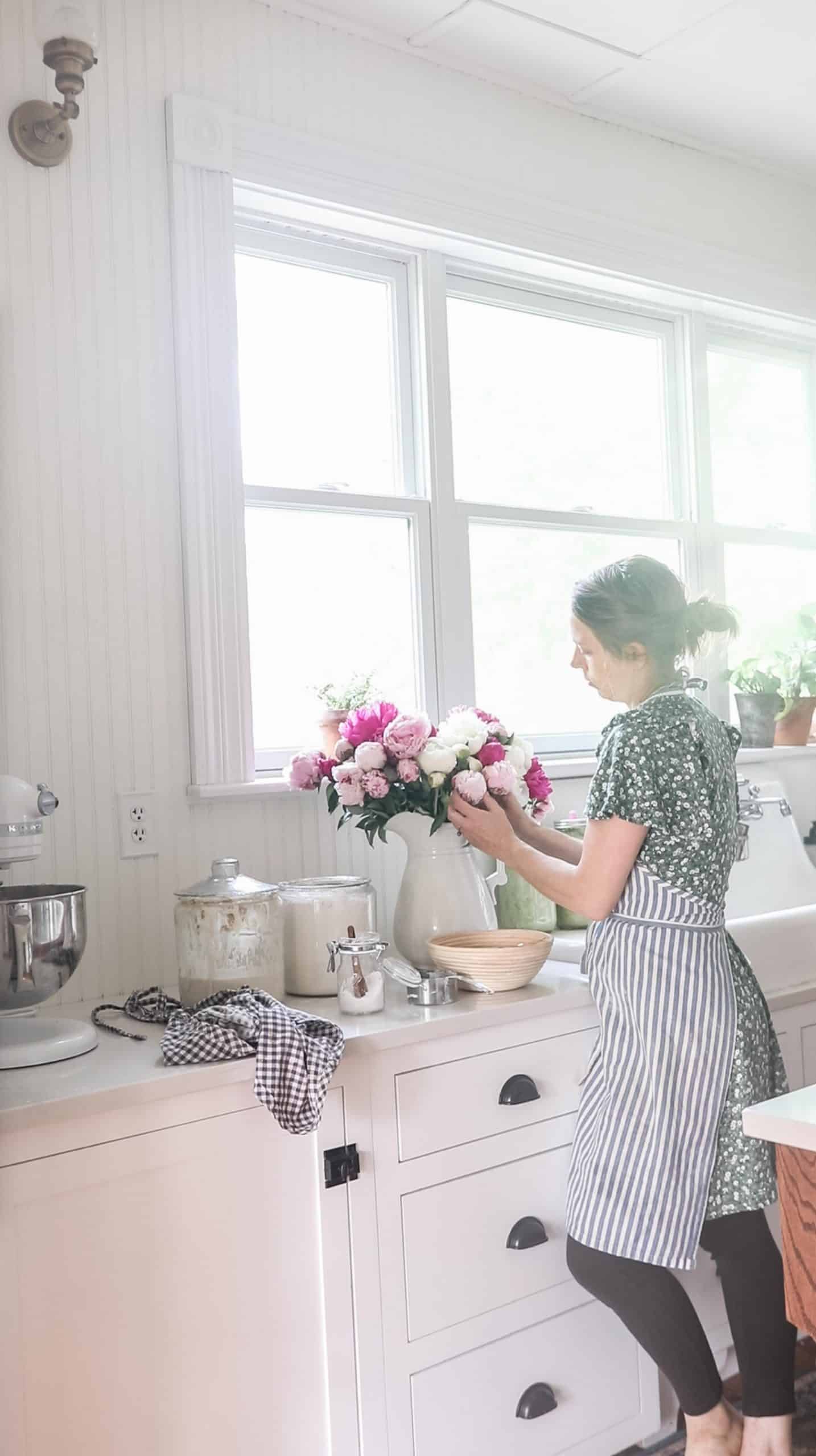
Are Flower Gardens Worth It?
I remember a conversation a few years ago when a friend, who grew a wide variety of cut flowers in a very small space, told me why she didn’t grow tomatoes and herbs. I was curious because, at the time, growing anything but vegetables seemed like effort wasted.
I mean, you can’t actually eat flowers, my practical side reasoned.
She lived in a city condo with a very small yard, and enjoyed flowers so much, that growing vegetables seemed like a waste of space to her.
You can buy vegetables at the store, was her logic.
It only took a few years for me to do a 180 and realize the value in “wasting” a few rows of garden space on some carefully selected cut flower varieties.
There is an old Chinese proverb that says, “If you have two loaves of bread, sell one and buy a lily.”
The value of flowers was not lost on the speaker of this proverb.
Flowers are Inherently Beautiful
Flowers are inherently beautiful. The joy gained from walking past fresh flowers is valuable in and of itself. An end, not a means to an end.
They don’t feed your belly, but they do feed your soul.
They offer a special beauty that is only available for a few months out of the year.
Planting seeds, harvesting flowers, and arranging them into beautiful bouquets are all part of the enjoyment for a gardener, knowing that they were planted for no other reason than to admire their beauty.
We certainly waste time and efforts on much more frivolous pleasures.
7 Tips to Grow a Beautiful Cut Flower Garden
1. The more you cut, the more they produce.
Now this isn’t universally true for all flowers, so check the variety you are planning on planting.
For example, I grow peonies in early spring. They are beautiful, and have the loveliest smell of any flower I have ever beheld, but they are short lived. Basically, they break almost every rule for a good cut flower candidate. Once you cut them, you better get out the camera, because they last all of one to two days in a jar full of water. My plant produces about five or six large flowers, and that is all. Cutting them back doesn’t encourage them to make more.
I’m guessing all these facts add up to the reason peonies are so dang expensive to buy in the store.
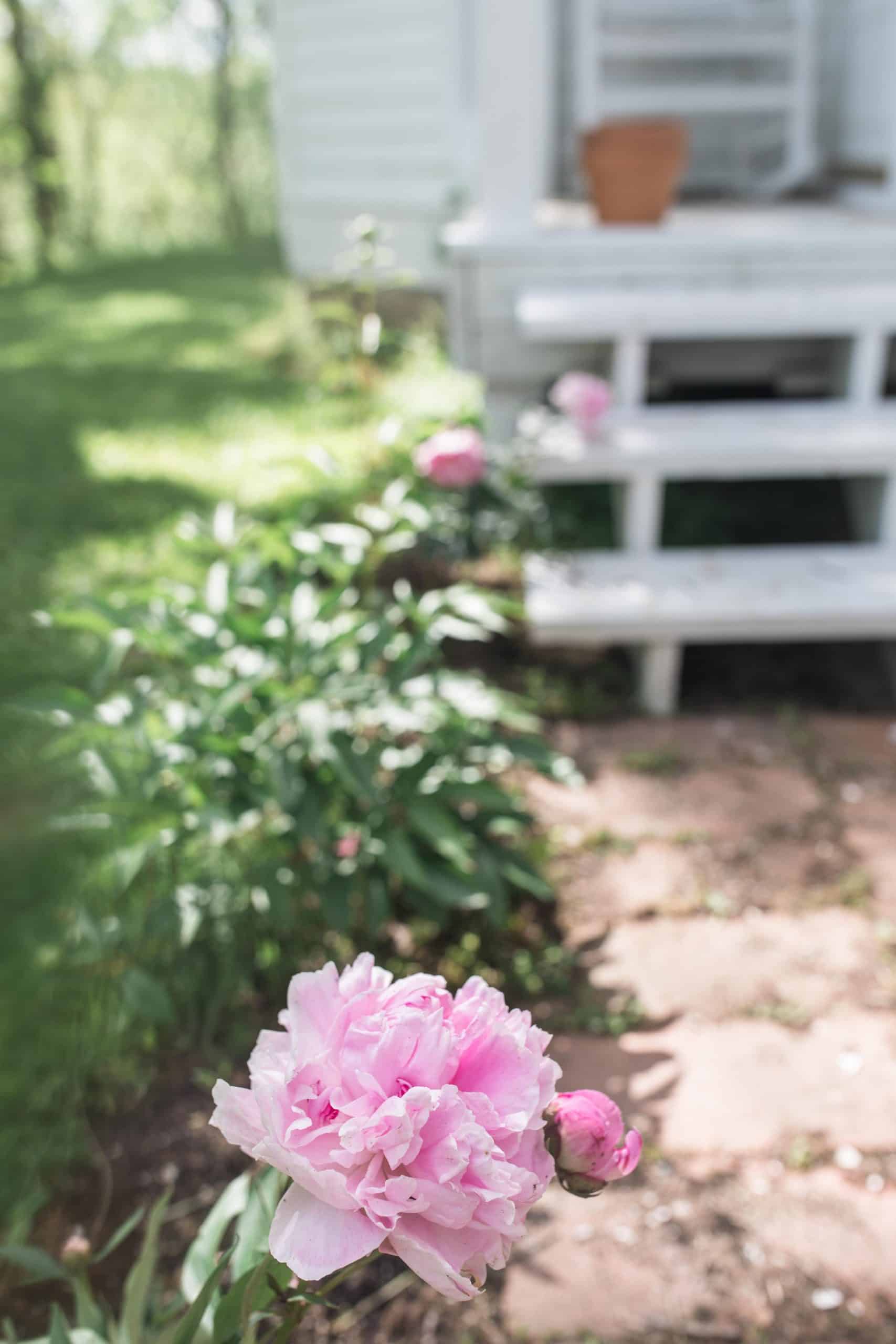
In my summer cut garden, I favor cosmos and zinnias, because they produce from late June through mid to late October, or whenever the first frost happens to be.
The more you cut, the more they produce.
Just two rows of zinnias and cosmos will keep your home in bouquets for all of summer, and most of fall.
Other great varieties are dahlias, sunflowers, roses, hydrangeas and lavender.
This year I planted several white tea roses by the barn. I was instructed by the nursery to cut them back to the bottom where there are five leaves. This will yield a beautiful long stemmed rose for my arrangements and keep the plant thriving.
2. “Dead head” your flowers.
My flower friend that I talked about earlier taught me this lesson.
When you are out harvesting flowers, make sure to cut off all the dead or dying blooms that you didn’t get to yet. The plant is wasting extra nutrients and water on a bloom that is already near the end of its life cycle, so relieve the plant of this burden by snipping off all the dead heads.
This will encourage the plant to focus its energy on creating and opening new blooms, instead of maintaining the old.
3. Plant flowers that are especially hardy to drought and weeds.
For me, this comes down to four exceptional varieties: cosmos, zinnias, dahlias, and sunflowers. (This may vary, depending on the zone you are in.)
I have tried growing plenty of other types of flowers, but none have ever done as well as these four.
In fact, they are so easy to grow that I always get ‘volunteer’ plants all over my garden from flowers that dropped seeds the fall before.
I have zinnias growing in my driveway.
They aren’t known to re-seed themselves, per se, but I have it happen in random spots around my garden and home every single year.
If you are a lazy gardener, like myself, you will really only need to weed when the seedlings are small and first coming up. I usually neglect my weeding duties from June on, and my flower crop is none the worse for it.
I enjoy cut flowers all summer long. More than I can even use.
Check your zone to find out which flowers grow best in your region. Some are more suited to heat and humidity while some favor cooler environments and shade.
I live in Missouri, so summers are hot, humid, and usually pretty dry.
It is necessary to keep the soil moist while the seeds are germinating, but after that they can get by with very little water.
Bear in mind, I did not water the volunteer zinnias growing in my driveway, yet the seeds managed to sprout anyway, so they could probably handle that as well. But as a general rule of thumb, seeds need to have moisture to germinate.
4. Use natural weed repellent
I love this handy guide for using essential oils to ward off garden pests.
Zinnias are especially prone to beetles that eat little holes in the blooms and make the leaves look like lace. I have actually encountered this issue in my garden this year.
Essential oils like cedarwood, lemongrass, eucalyptus, thyme and peppermint mixed with a little water in a spray bottle can help keep pests away.
According to the doTERRA blog, “Vinegar makes an effective herbicide and weed killer.”
For weed control, you can put mulch or grass clippings between the rows, and around established plants.
If you are brand new to gardening, make sure to do a google image search to find out what the seedlings look like for the seeds you are planting. This way you will be able to differentiate the weeds from the tiny seedlings.
5. Long stem varieties that last up to a week after being cut are ideal.
Geraniums, the darling of hanging baskets everywhere, are beautiful, but their tiny stems make them terrible candidates for cut flowers.
You want something that can stand tall in a vase or mason jar.
Light blooms with strong stems do well for extended periods of time, after they are cut.
Like I mentioned before, peonies are my favorite flowers of all time, but you better take them in while you can.
The gorgeous top heavy blooms start to wither and fade away just a few days after being cut.
6. Choose plants that produce for several months.
For minimal effort and maximum blooms, select flower varieties that keep on producing like a tomato plant does, allllllll summer looooong.
This year I planted hydrangeas all over our homestead to enjoy the beautiful blooms year after year. You gotta love perennials!
My beloved cosmos continue on so long, that by late summer/early fall, they stand over seven feet tall. They start producing flowers when they are less than two feet tall. They just keep going and going and going…
The only thing that can get them down, from my experience, is a frost.
And that, my friends, in the life of a cut flower gardener, is a sad sad day. That’s when you bring in the pumpkins!
7. Choose blooms with colors and shapes that coordinate, and match your home decor style.
Be proactive in planting your cut flower garden by thinking ahead several weeks to the end result.
I made the mistake the first couple of years of just throwing seeds out there, without thinking about the bouquets and arrangements I would create with them for the next several months.
Maybe I wasn’t really confident anything would actually come up at all.
But when they did, I had oranges, reds, yellows and speckles, and all kinds of crazy mismatched blooms on my hands.
I planted every color zinnia on the market, and ended up with arrangements that looked tacky, and too vibrant for my home decor style.
Now, I choose flowers with softer shades, like white, pink and green.
Tips for Making Beautiful Arrangements
1. Include some buds.
In my older mindset, you know the one where I thought growing flowers was a pointless endeavor, I thought cutting buds before they were completely open was wasteful.
But, remember the philosophy I later developed… Beauty is not wasteful.
And, by golly, I think unopened blooms look spectacular in a flower arrangement.
I always include several, and I really think cutting them back like that ultimately encourages the plant to produce more.
2. Add herbs.
I like a little added greenery in my flower arrangements.
Mint and basil are both perfect additions to your cut flower garden for this application.
3. Use unconventional vessels, instead of a vase.
Think ironstone pitchers, mason jars, galvanized buckets, and enamelware.
Whatever you are drawn to, and is gracing your shelves already, put flowers in that.
Me, I have ironstone everywhere, so that is typically the route I take.
I normally order all my seeds from Baker Creek Heirloom Seeds online.
Pink and White Cosmos
Sunflowers are very hardy cut flowers, and are super easy to grow.
I hope you all are encouraged to start growing your own cut flower gardens!
It truly is so simple and worth the effort to have fresh blooms in your home, without spending a dime, all summer long.
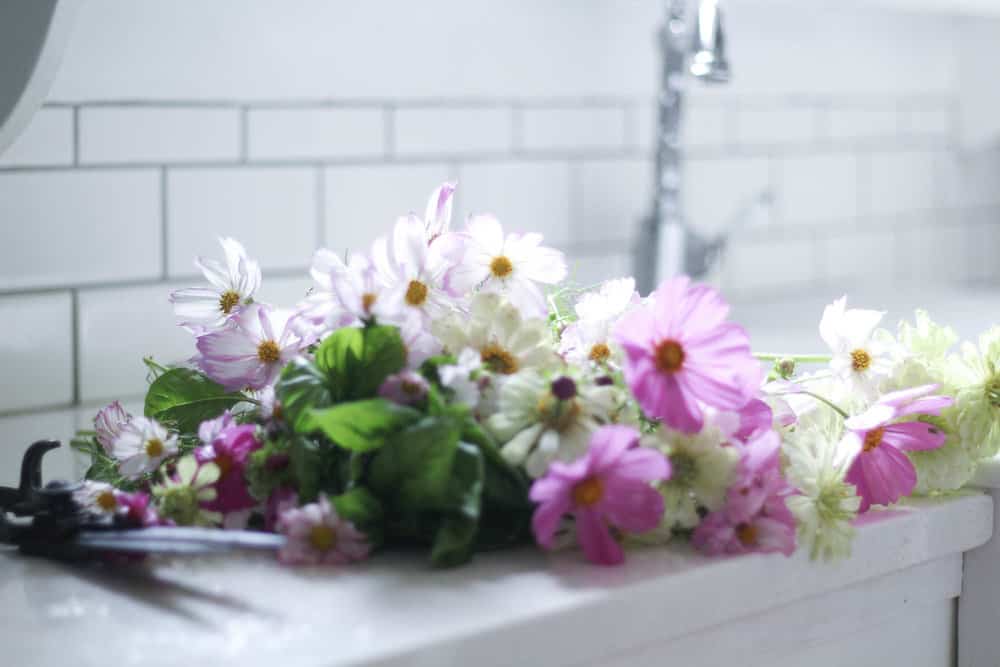
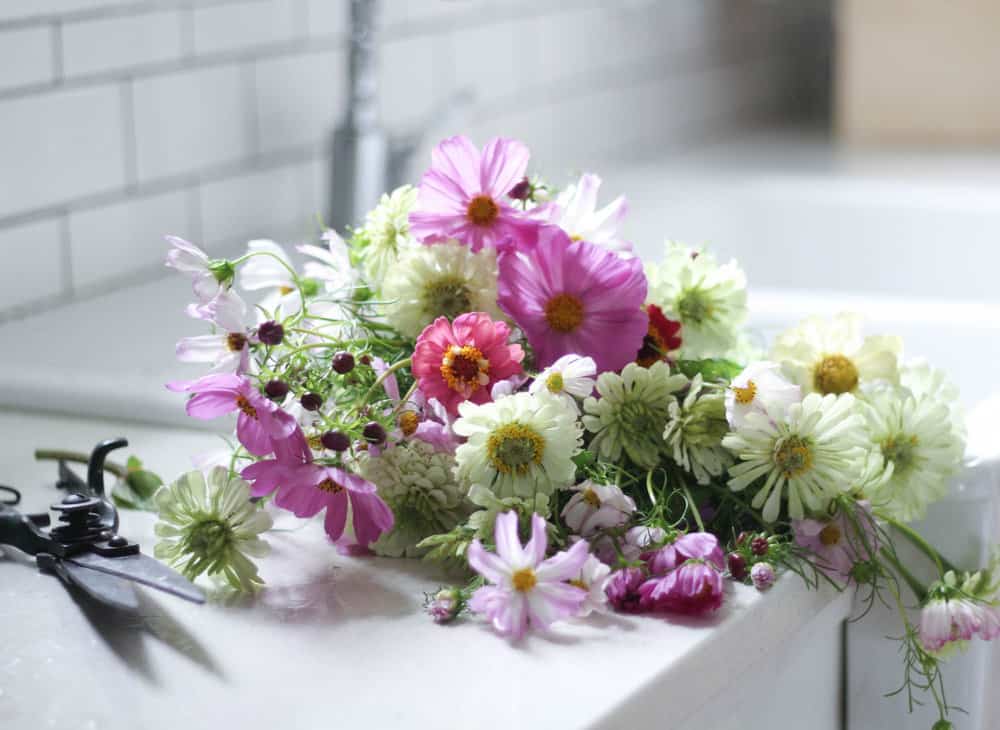
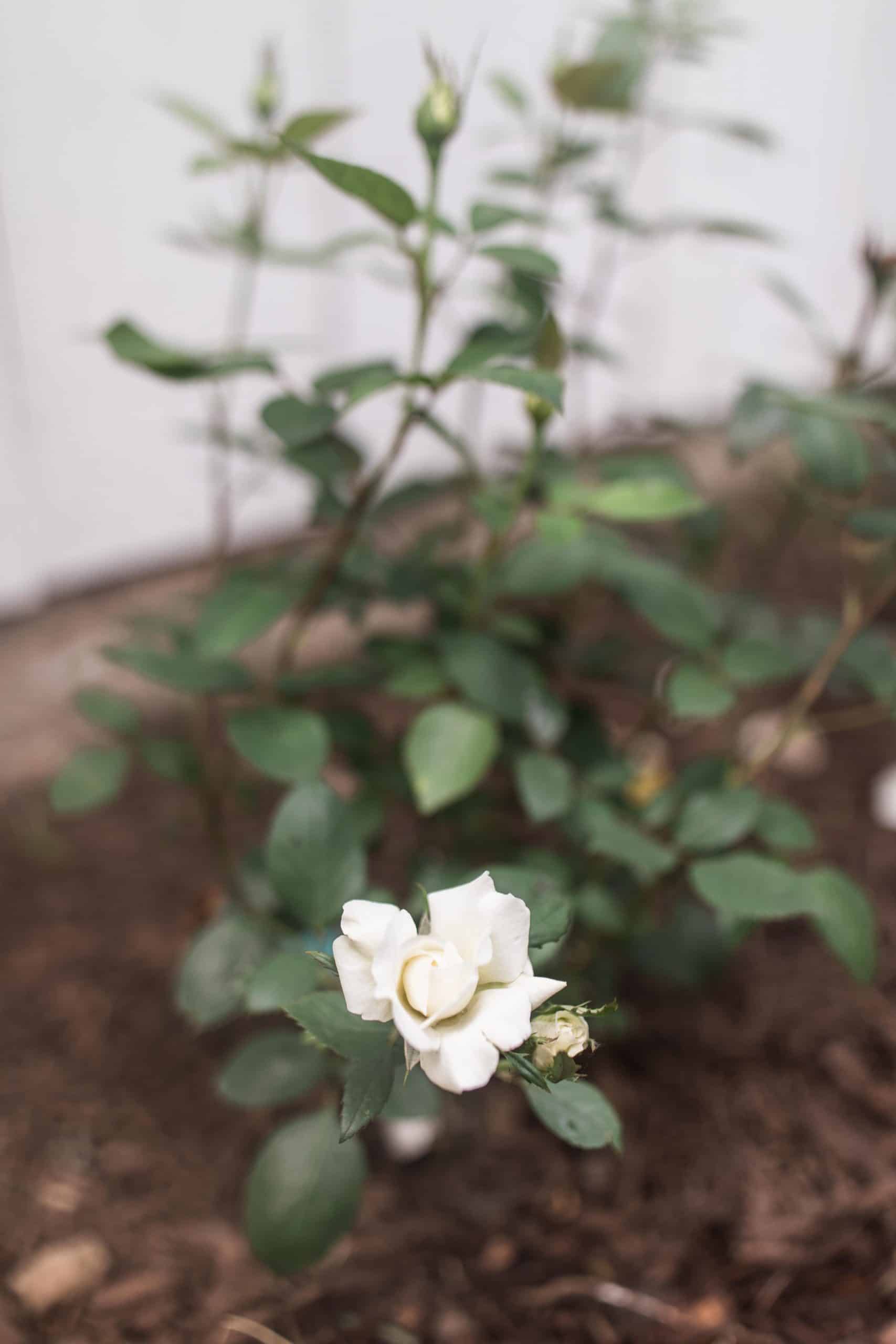
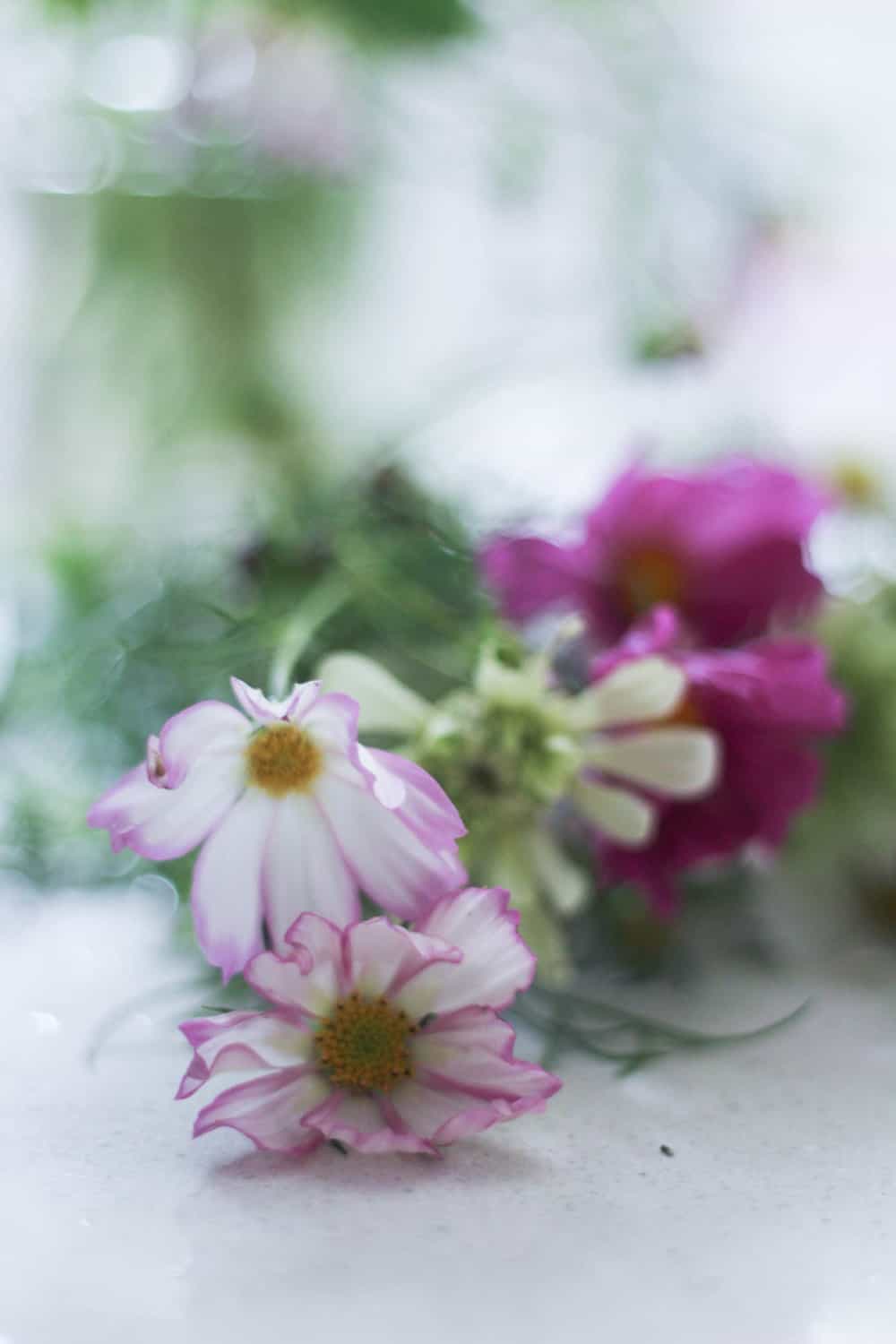
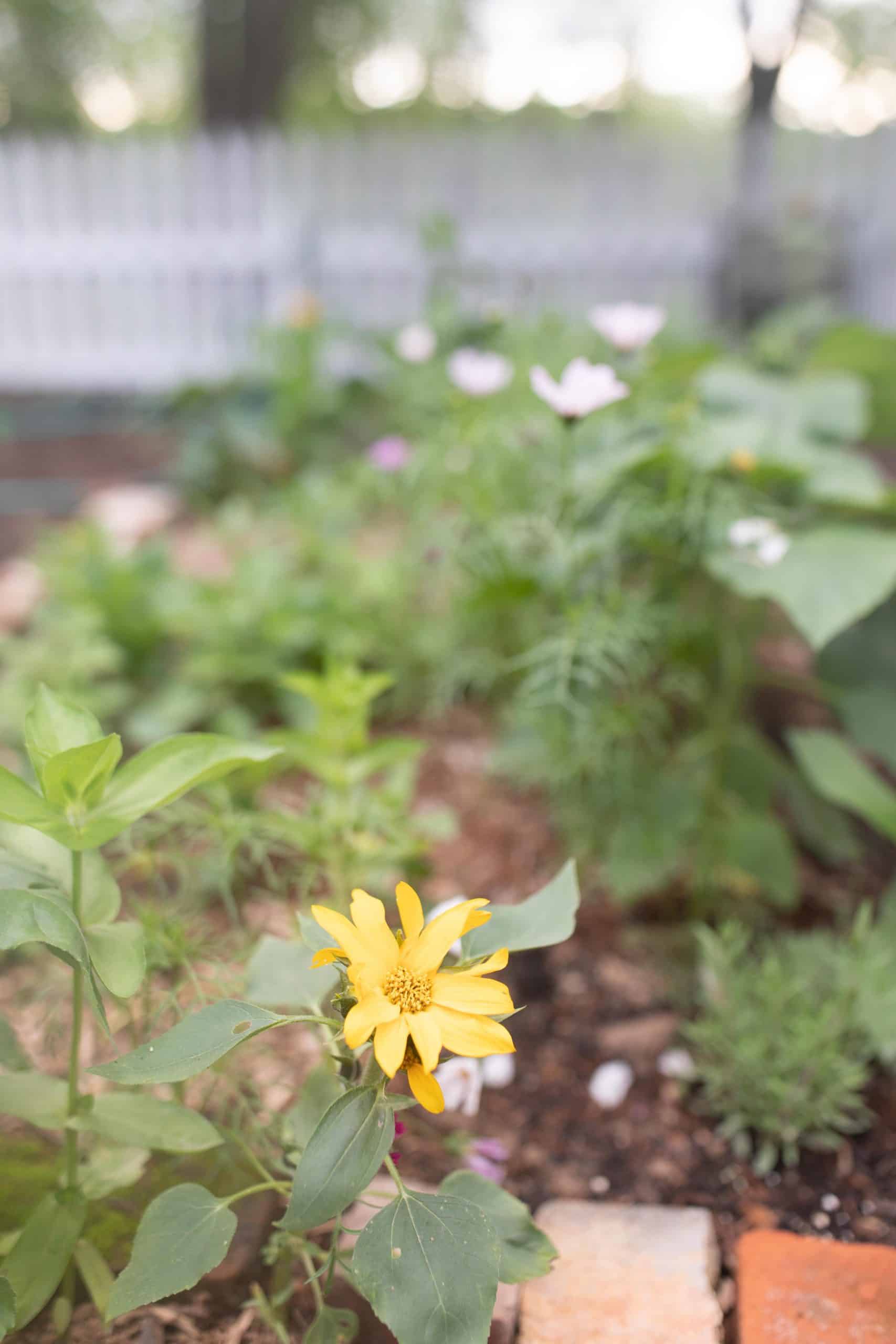
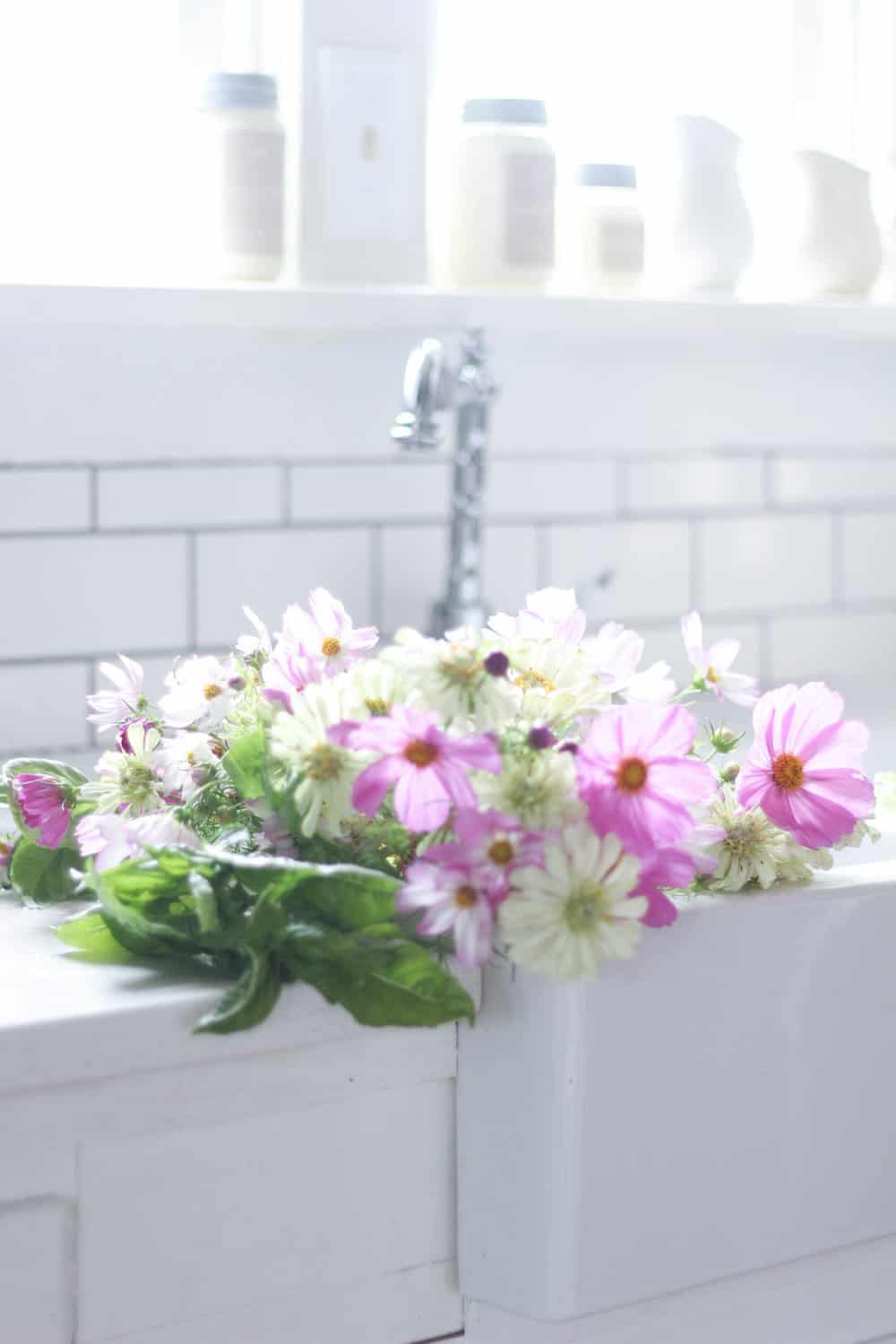
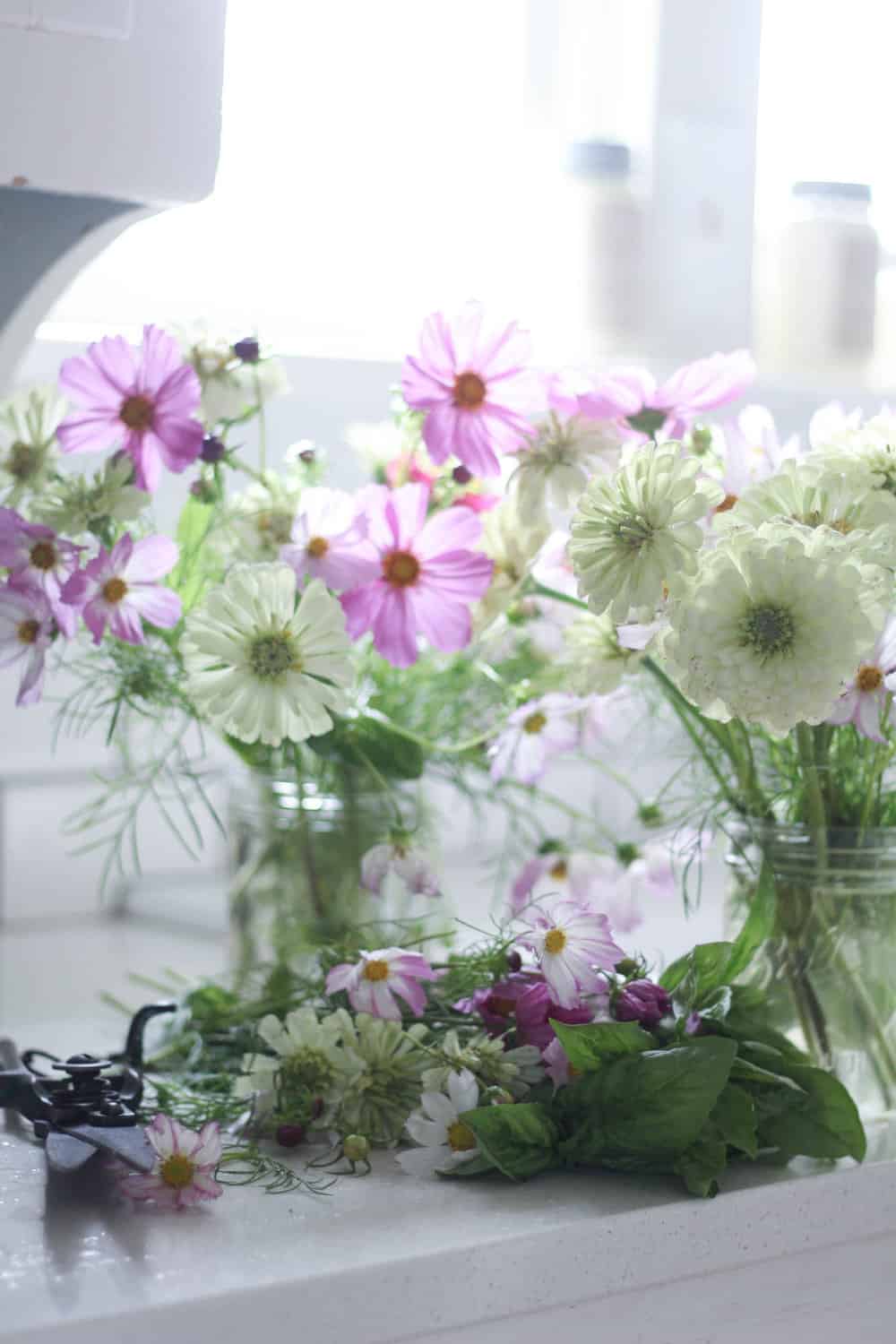
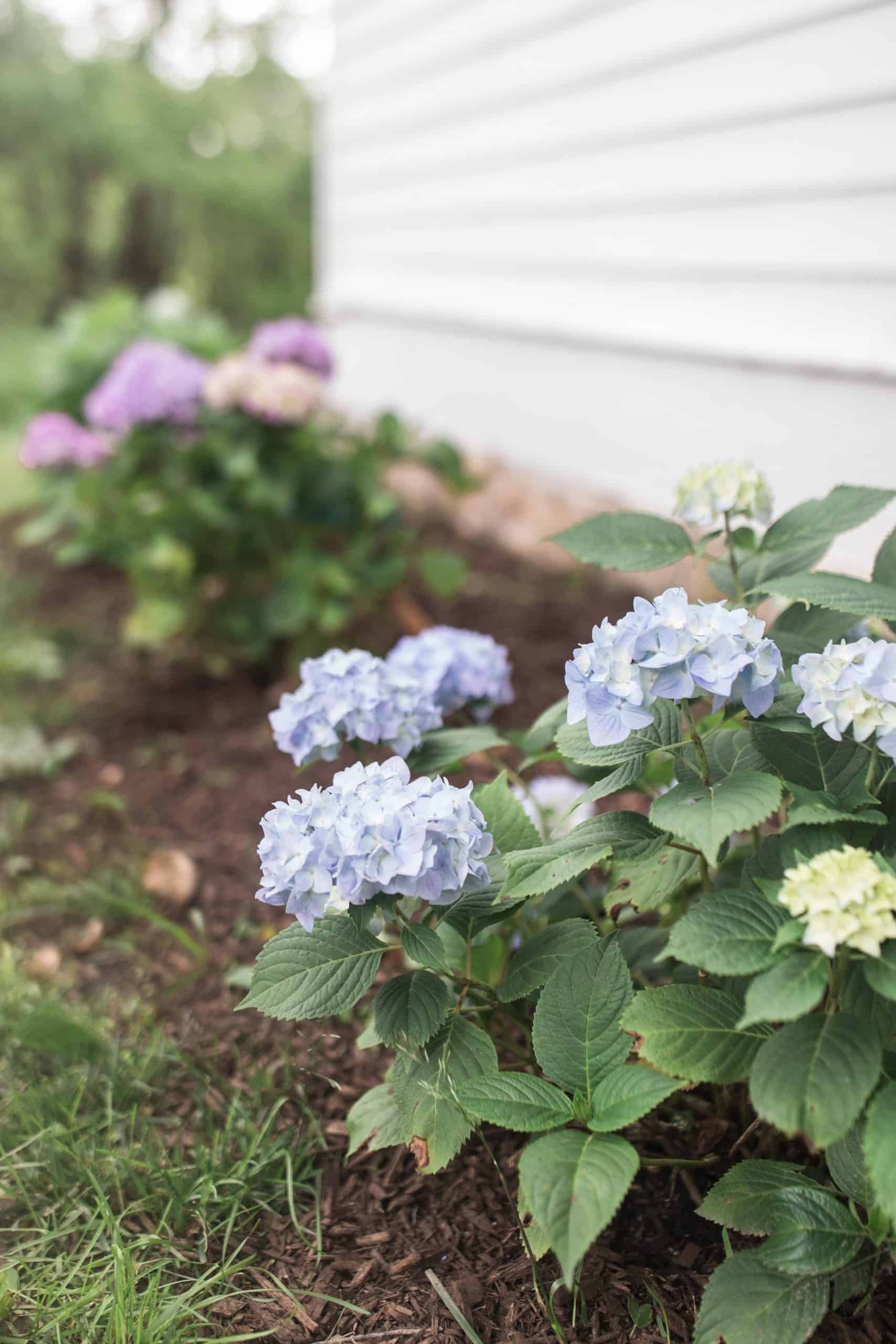
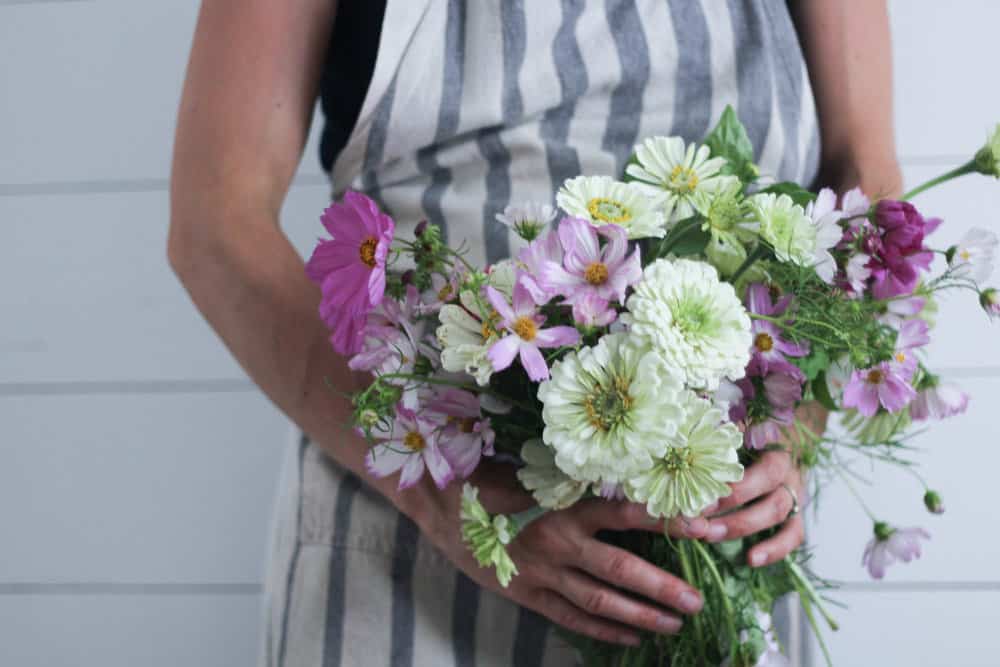
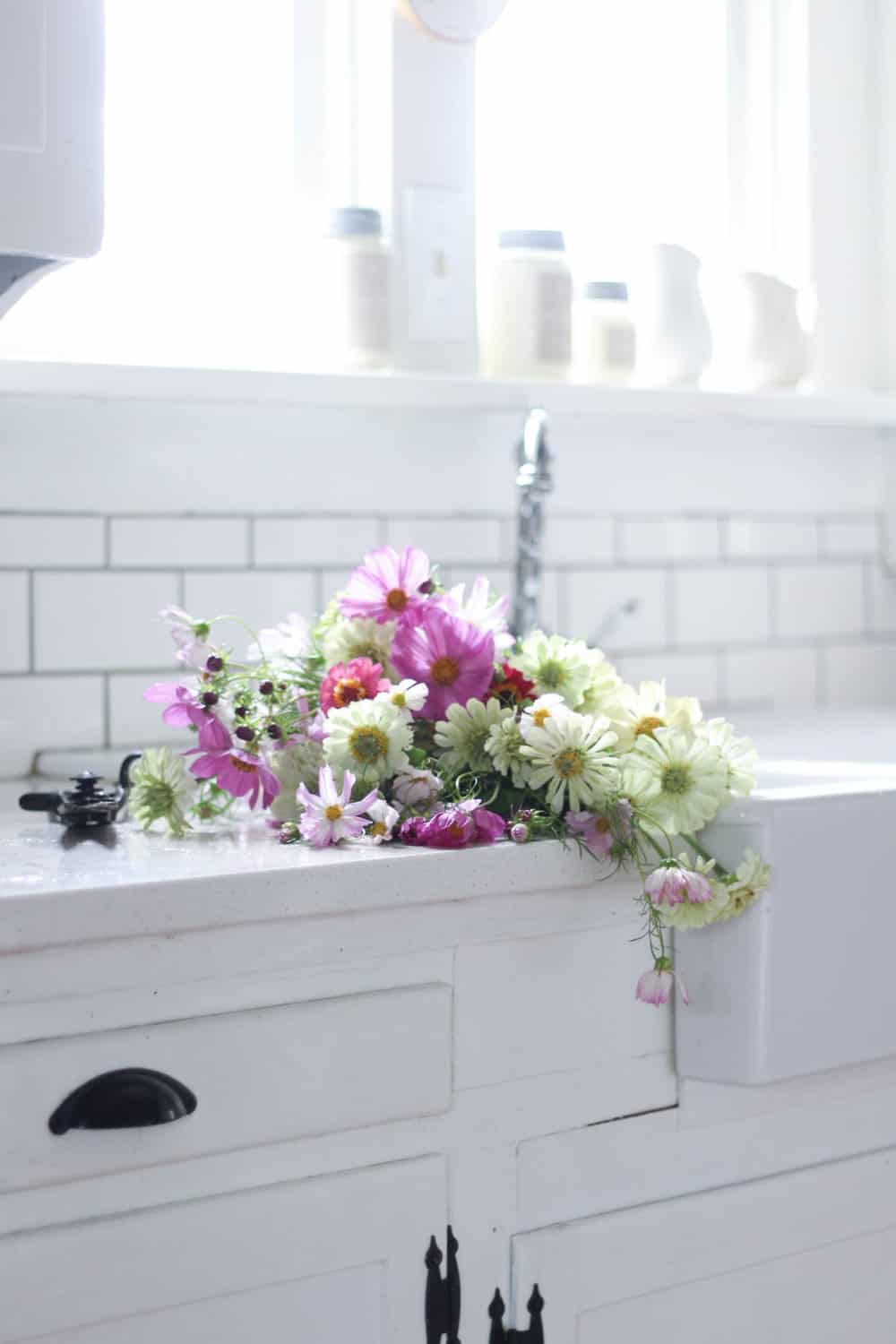
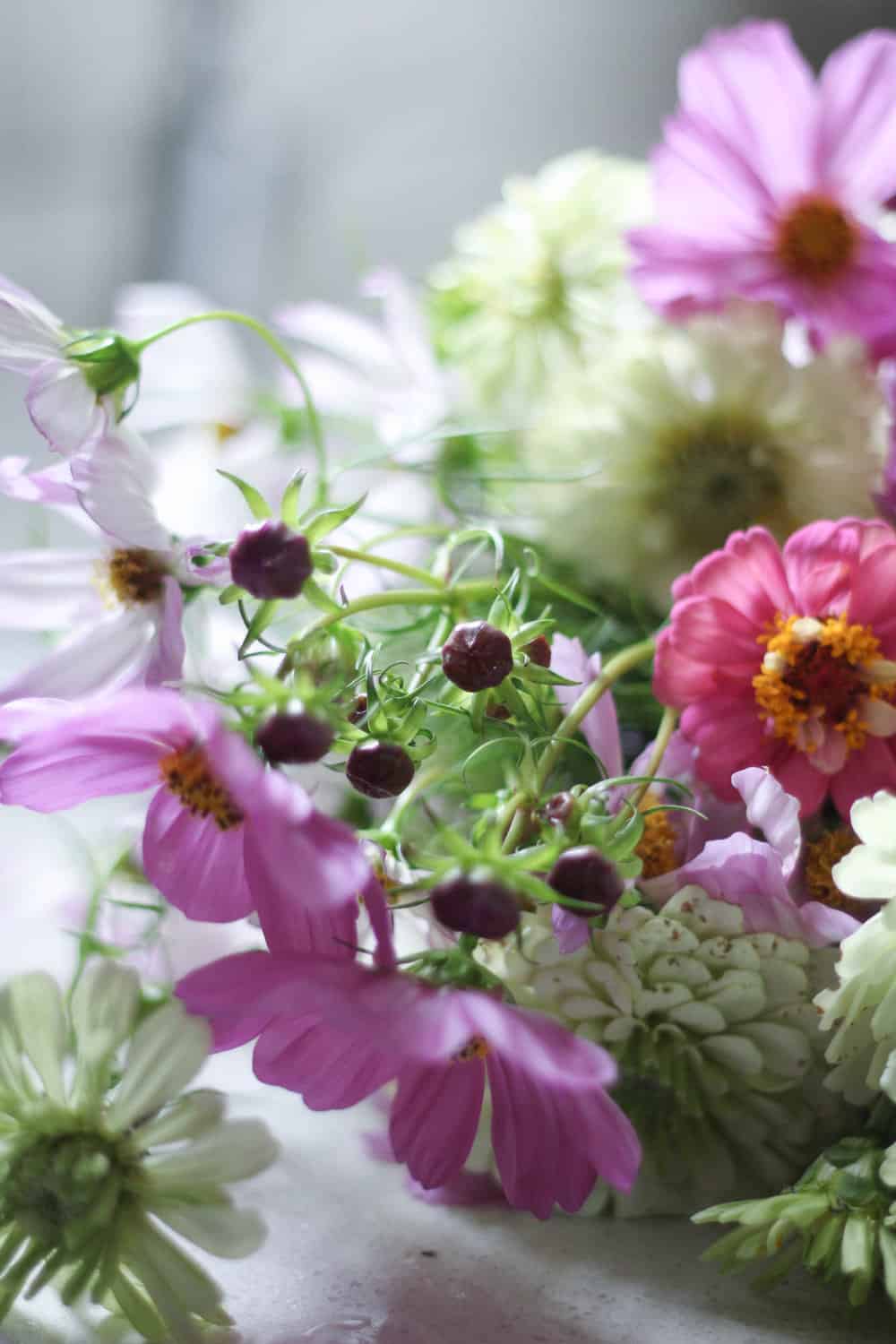
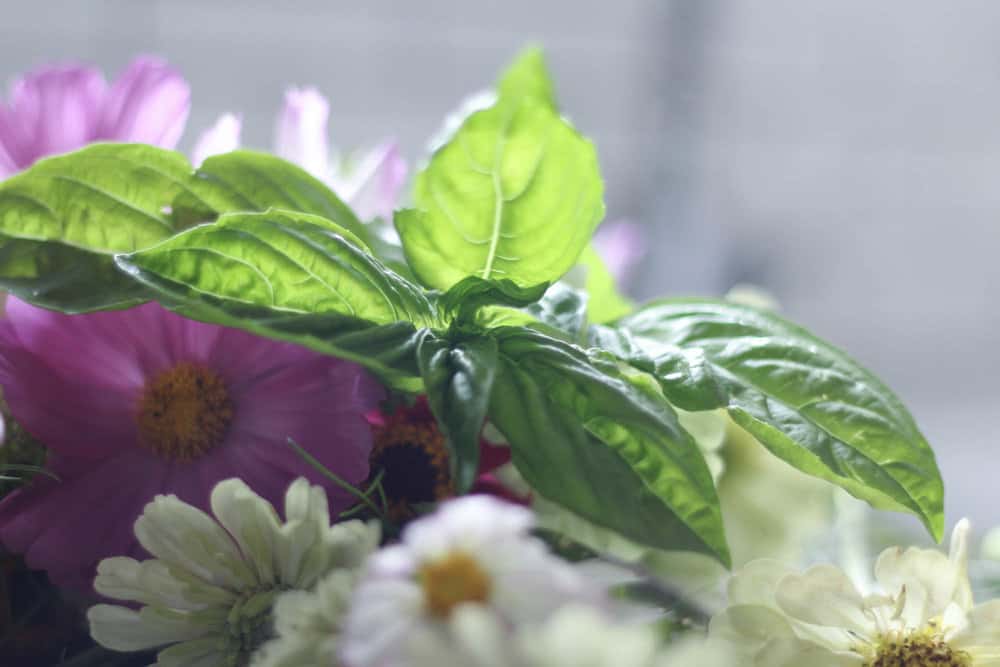
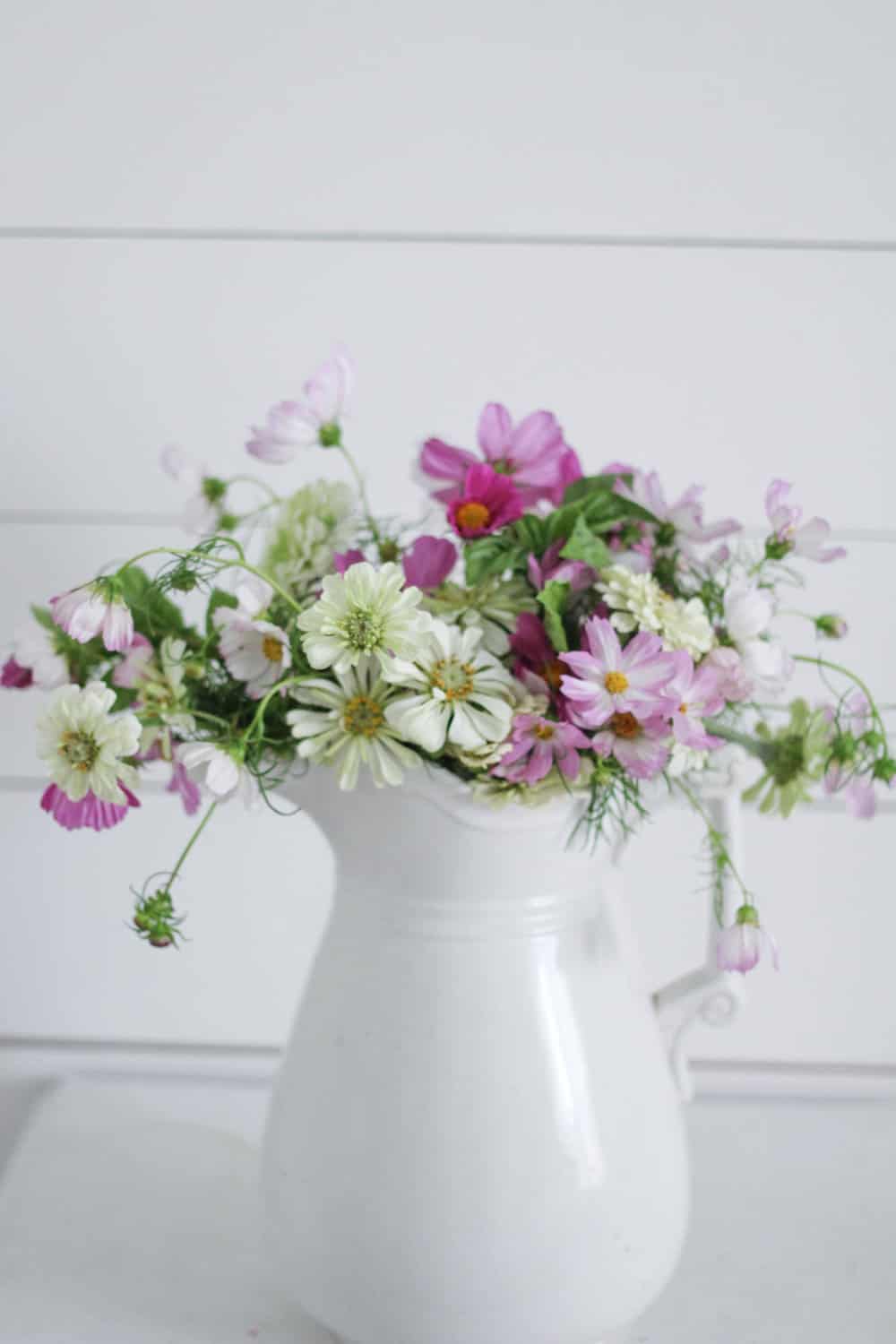
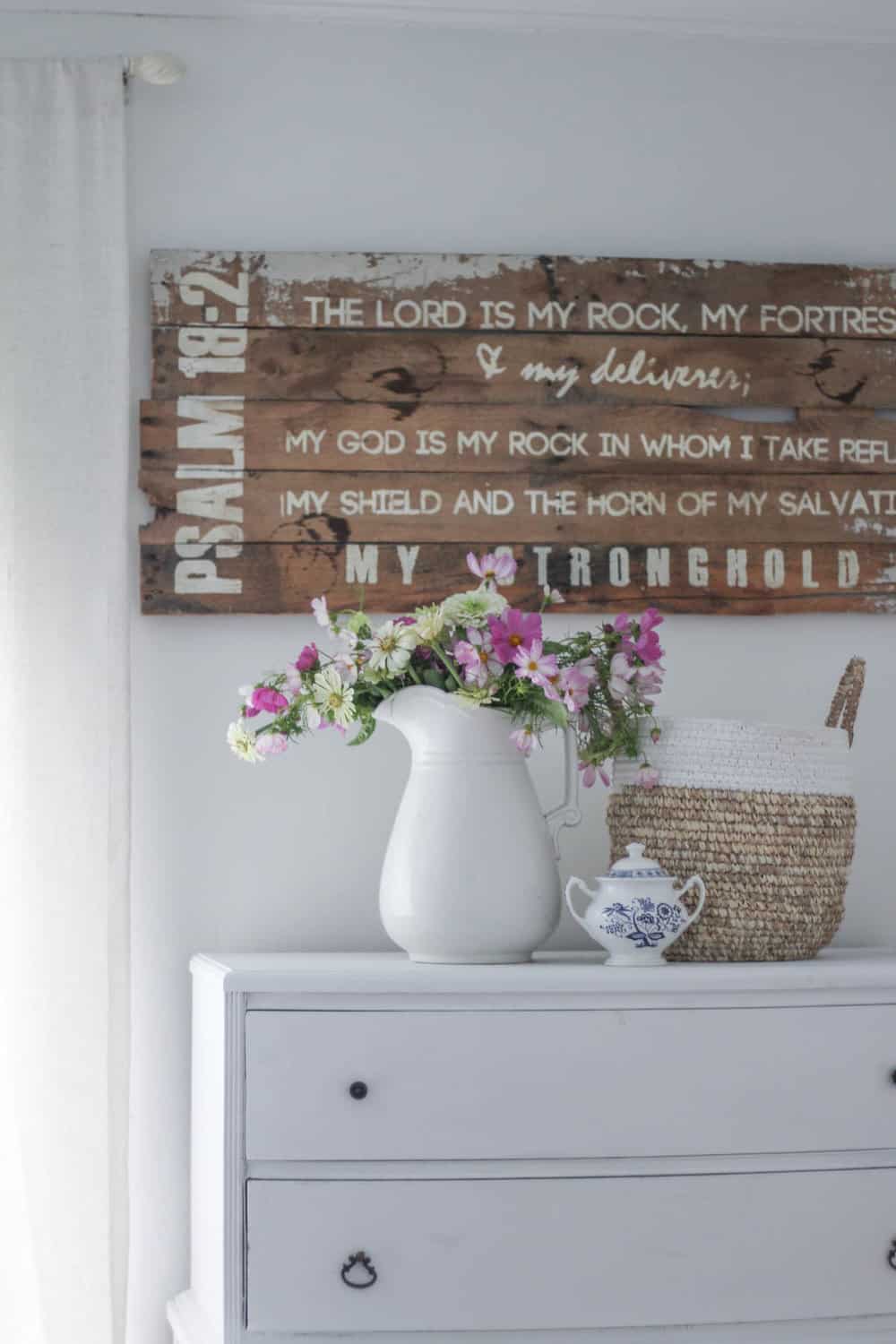
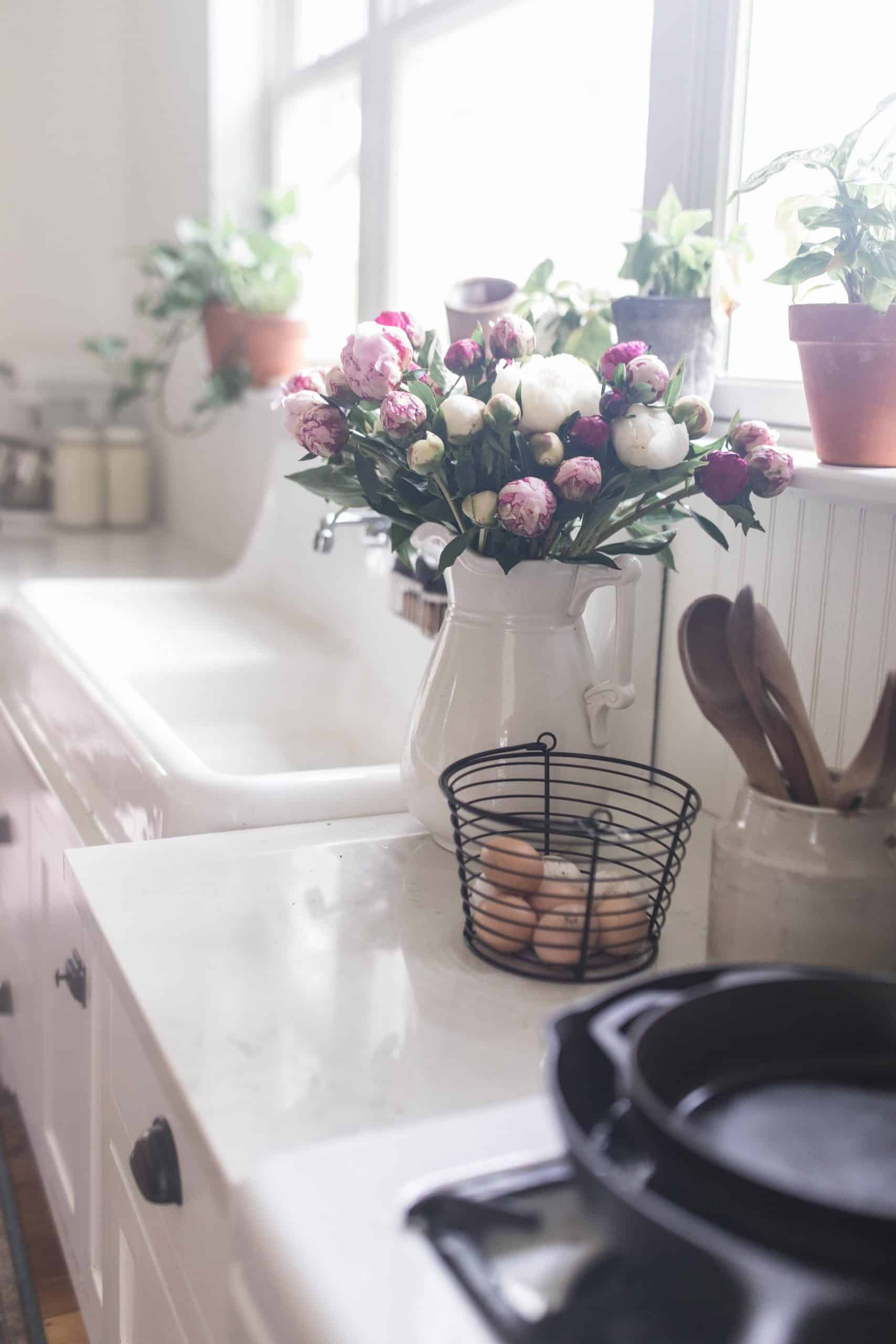
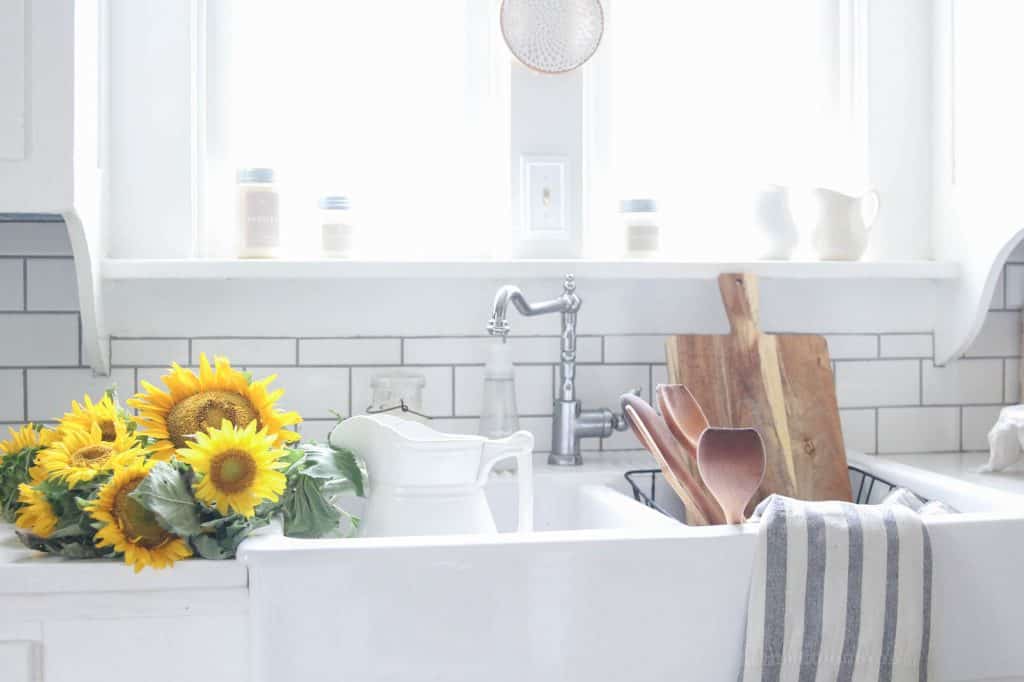
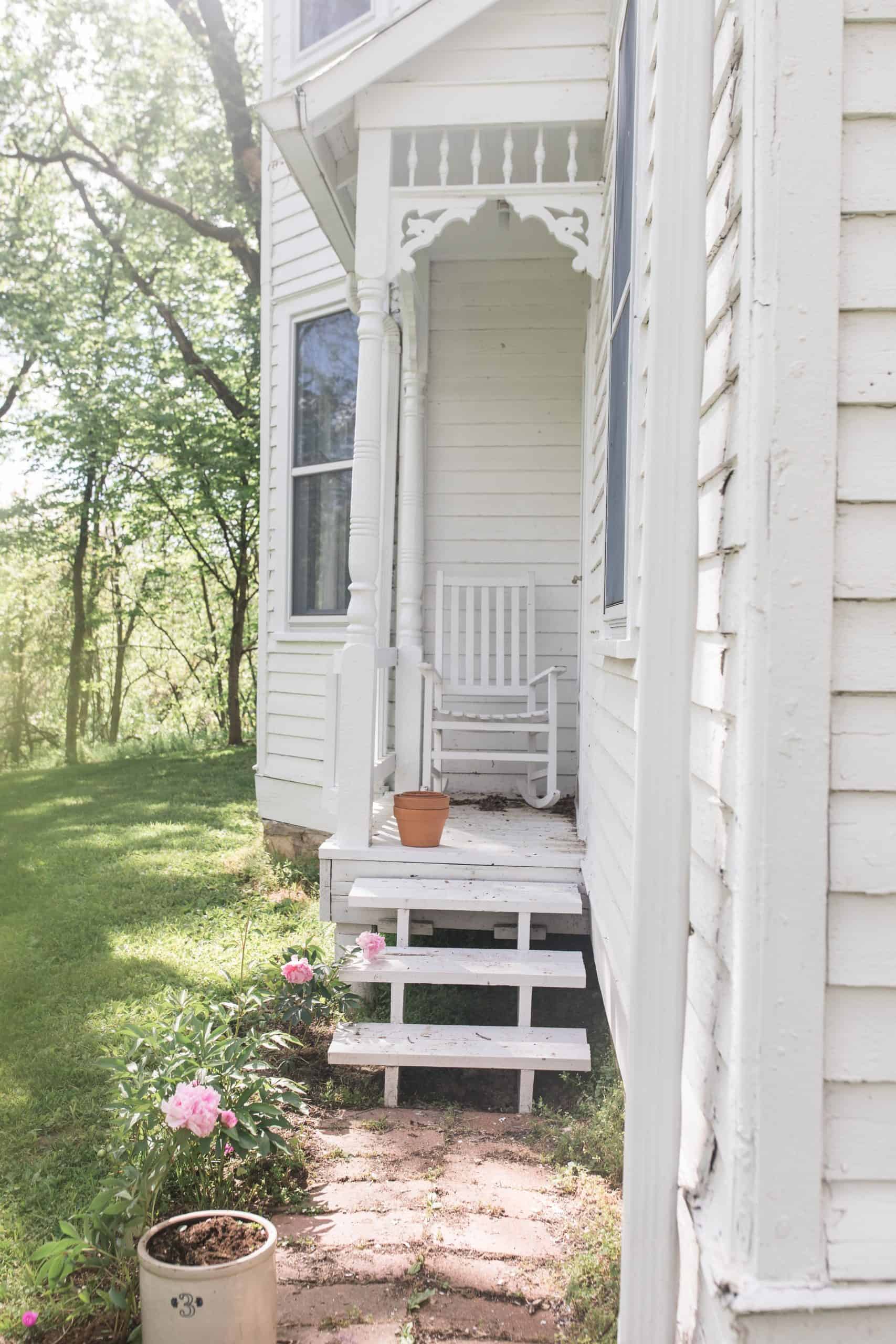
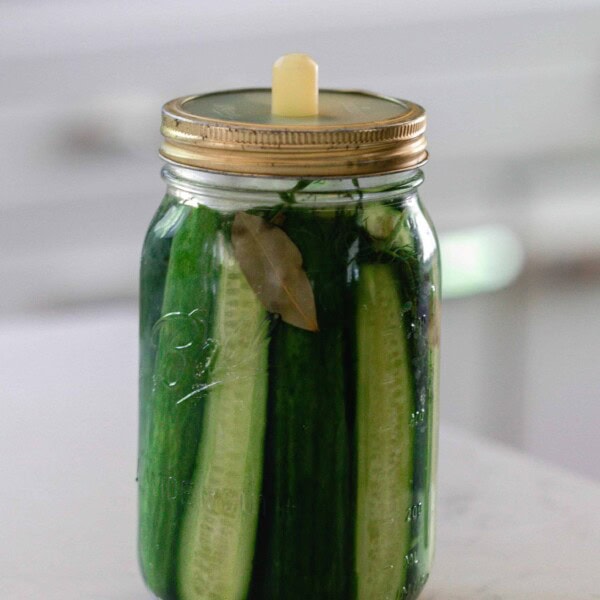
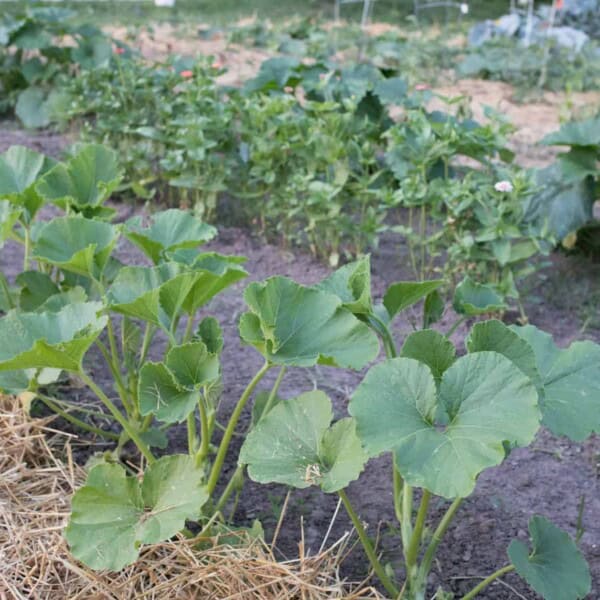
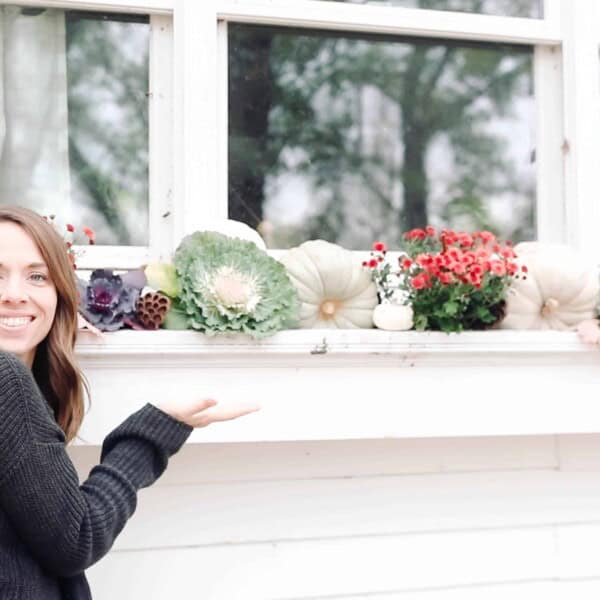
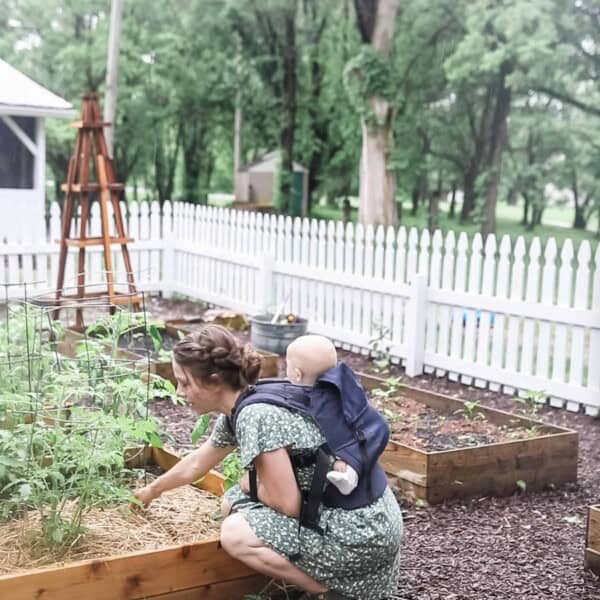






Thanks for the tips lisa! I was inspired to put cut flowers all around my house instead of just the kitchen table by watching you. I grow dahlias and am trying cosmos this year. (Cosmos Also benefits my bee hives🐝) i love your decor style too, since ive picked up an ironstone pitcher at a thrift store, and have been using it to hold greens over winter and boquets over spring/summer. Lilacs are one of my favorite spring flower 🌼 🌸!
Thank you so much for your kind words!